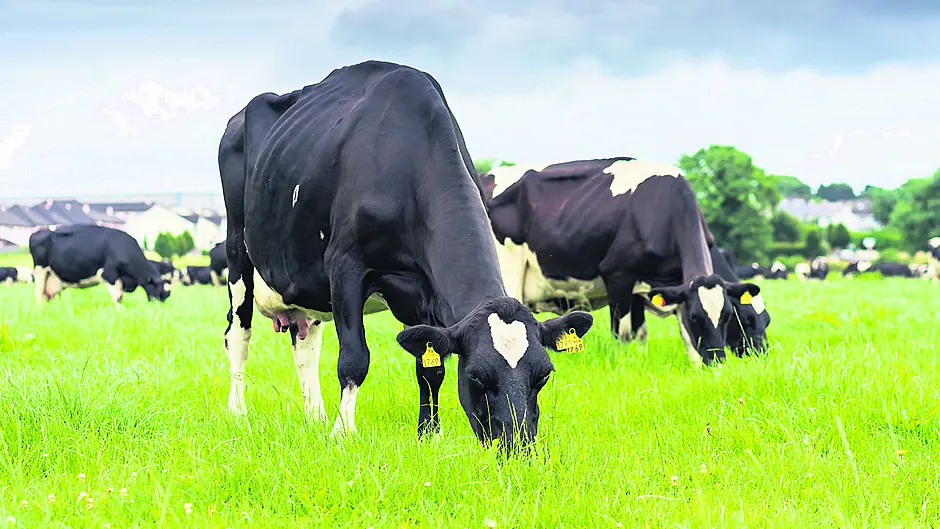AS we enter the month of May, many of the management decisions made on dairy farms in the coming weeks will have substantial long term effects on the farm’s performance.
Good grassland management now will set the farm up for the summer period and help to maximise peak yield, choice of bulls for breeding will determine the future genetic potential of the herd, while the success of the breeding season will determine how compactly the herd will calve next spring.
Grass growth rates have been relatively low in April, and this has impacted on grass supply on many farms.
It is important to walk your farm regularly to assess grass supply as the situation can change rapidly at this time of year, resulting in a scarcity of grass quickly turning into a surplus.
Where grass supply remains tight, supplement with appropriate rates of concentrate to match grass supply and demand. It is vital that the average farm cover is not allowed to fall below 550 kgDM/ha, as growth rates will be negatively impacted if farm cover falls further.
Latest Pasturebase figures show that the pre-grazing yields on many farms are already too high (>1,600 kgDM/ha).
Where this is the case it is important to take action quickly to get the pre-grazing yield back to 1,400 kgDM/ha. Failure to do so now will result in reduced grass quality later in the grazing season, which in turn can reduce cow performance.
One option to rectify the situation is skipping strong paddocks and cutting for bales, or where stocking rate on the grazing area is still relatively low (less than 3.5 cows/ha) some of these paddocks could be closed longer term for first cut silage.
Alternatively a decision could be taken to take out some of the grazing area for reseeding, or allow additional stock to the graze some of the area.
Grass dry matter is currently high (>18%), making it easy to under estimate how much grass is available in paddocks.
Grazing residuals in May will have a large impact on grass quality in subsequent rotations. It is crucial animals graze down to 4cm, as failure to do so will result in more stem and poorer animal performance.
Where target residuals are not being achieved there may be scope to reduce supplement rates, or grass allocations.We are now entering the peak growth period of the year and the response to chemical nitrogen will be relatively high.
Spreading nitrogen now should result in a substantial increase in forage production. For grazing paddocks apply 1 unit of N per day (20 units N applied after grazing for a 20 day rotation). Where clover content of a sward is high, N rates can be could by 50%.
It is important to also apply sulphur, as sulphur deficiency is most common is the summer period. Aim to apply a total of 20 units per acre of sulphur during the growing season. Apply P&K based on soil analysis results.
As the breeding season progresses, it is important to assess the herds submission rate. At least 90% of cows should have been submitted for breeding by the end of the third week of breeding. Where this target looks unlikely to be achieved it is important to act early and determine why this is the case. Are your cows not showing heats, or are you simply not spotting them?
Any cows not bred in this period should be assessed by a vet to determine if they are cycling. By acting early, you will greatly increase the chances of these cows remaining in the herd for another year.
• Mark Treacy is a business and technology dairy advisor based in the Clonakilty advisory office.









